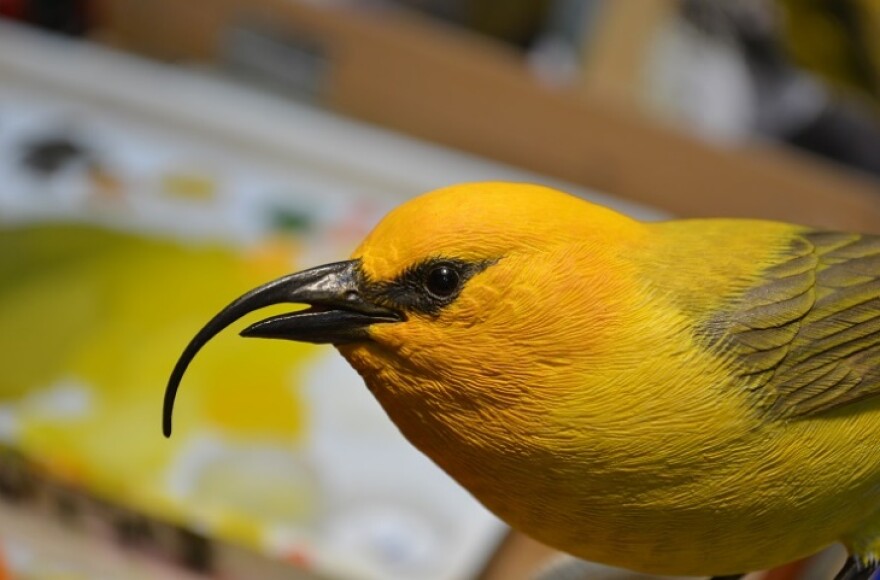
According to the World Wildlife Fund, more than 90% of the plants and animals inhabiting Hawaii are native to this place, and a greater variety of fish exist in Hawaiian waters than anywhere else. Protecting these plants and creatures can seem overwhelming, but individuals do find ways to make a difference. HPR’s Noe Tanigawa reports on one such case.
Haruo Uchiyama says he was weak as a child, and didn’t go to elementary school much.
“I was told I would probably live until middle school.” For long periods of his early life, Uchiyama says he simply lay in bed, no television.
“As a result, just thinking about something, imagining things, I think I’m very good at that.”
As it happened, Uchiyama grew stronger in fifth grade and rejoined his classmates, but he found they were living in different worlds.
“So I thought that being a salary man was not for me. I would have to do something that no other people do. That’s how I started thinking about what I can do for myself.”

For generations, Uchiyama’s family had specialized in wood inlay, which sometimes depicts bird designs. Uchiyama began to concentrate on birds, and he was given a desk at the Yamashina Institute for Ornithology to carve and study. Bird carving is a recognized art form in the US, where the first crude birds were decoys, thrown together on a hunt. American carving societies exist, but few examples approach Uchiyama’s level of artistry. After thirty five years, Haruo Uchiyama is now recognized as the country’s first wild bird carver by the Japanese government. He works primarily for museums and zoos around the world.
What amazed Uchiyama about Hawai‘i on his first visit here, was that so many of our honey creepers are going extinct.
“It really hurt my heart and I tried to figure out what I can do. What can I do?”
Molly Hagemann is the Vertebrate Zoology Collections manager for the Bishop Museum, which has the world’s largest collection of Hawaiian birds. Are these very lifelike to you?
“Oh, absolutely. It almost brings tears to my eyes to look at them because they’re very lifelike.”
Uchiyama’s birds do not look like specimens.
“You can see that each individual feather is recreated. There’s texture all over it, and honestly, the weight is around the same, these woodcarvings are very light.”
Hagemann was stunned by Uchiyama’s recent gift of four native bird carvings to the Bishop Museum

collection.
“Having these lifelike carvings to put on display and help educate people about these birds is absolutely necessary because unless we get the next generation interested in conserving these species, they’re going to be gone. So in order to complete the whole series of honey creepers it will take him around four years. He’s trying to raise funds to complete this project because he wants to donate it to the Museum and the people of Hawai‘i so that the school children can learn about the birds and become aware of the fact they need help in order to be preserved.”
There used to be over 50 honey creepers in Hawai‘i, but there are only about 23 of them left. Haruo Uchiyama plans to carve them all, male and female. For donations to continue Mr. Uchiyama’s project, please visit https://secure3.4agoodcause.com/bishop-museum/gift.aspx?id=1. When using this donation page, please designate the gift recipient as “Vertebrate Zoology Collection”.
See more of Uchiyama's carvings and find out about his other work at his website. You can contact Mr. Uchiyama at rakudowd78@mocha.ocn.ne.jp
Mahalo to Peter Tanaka, Bishop Museum volunteer, who kindly provided translation services.





